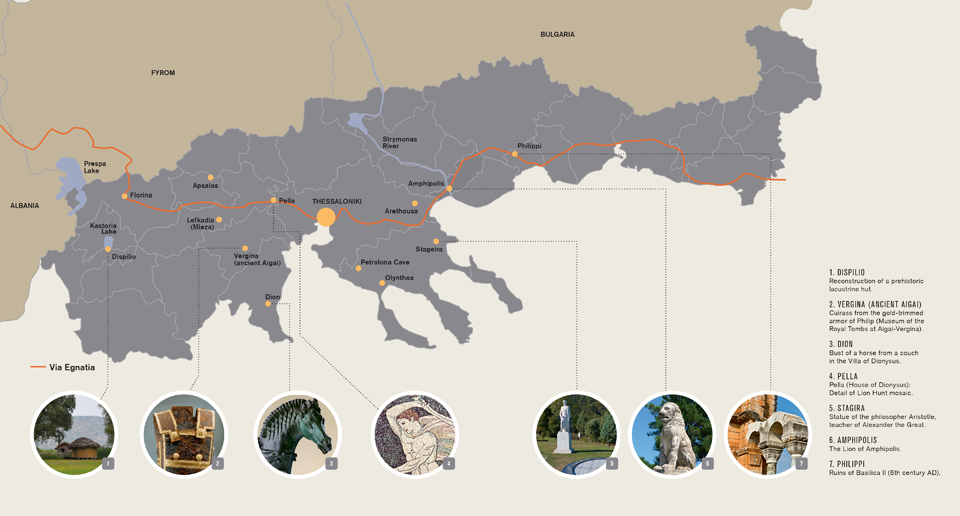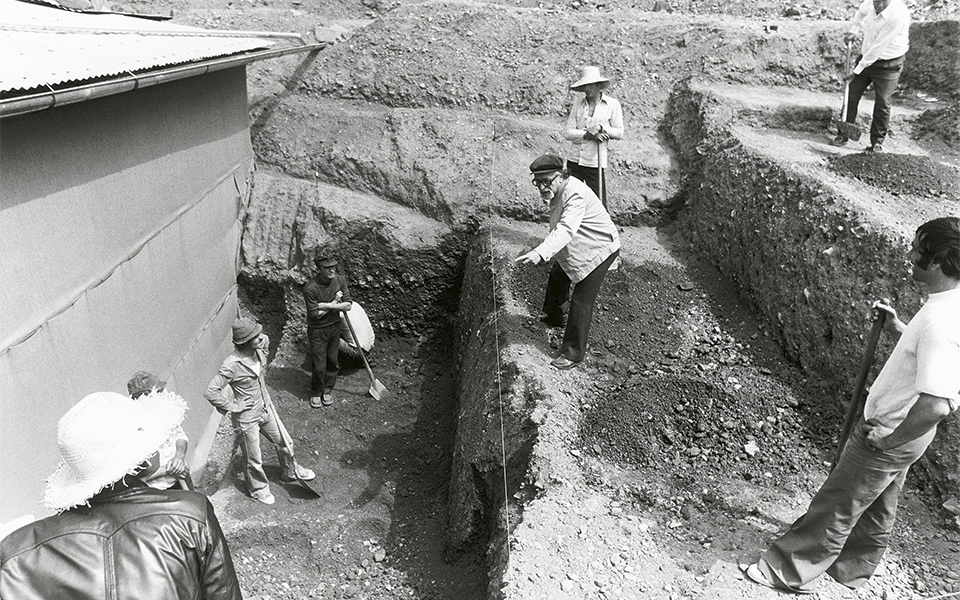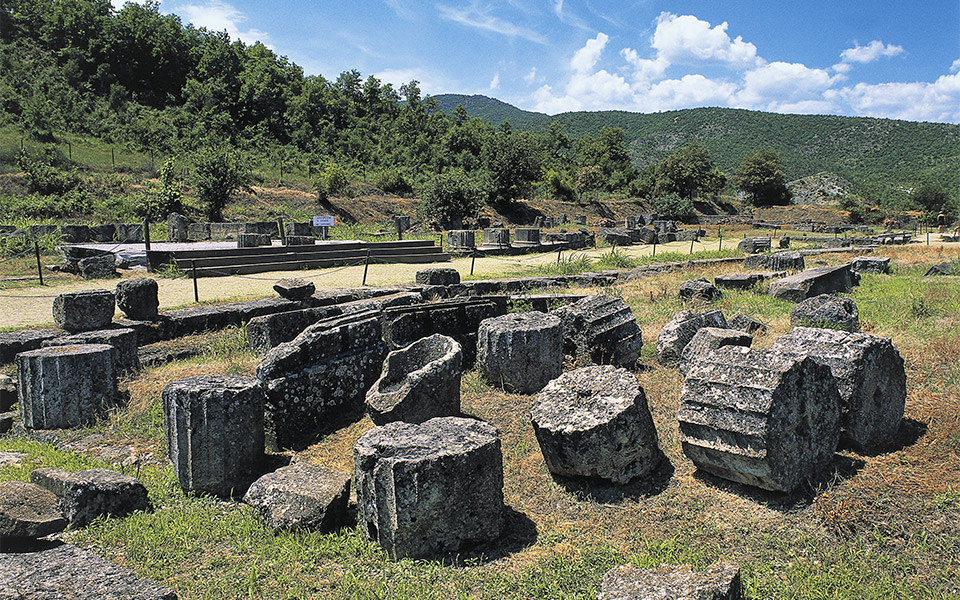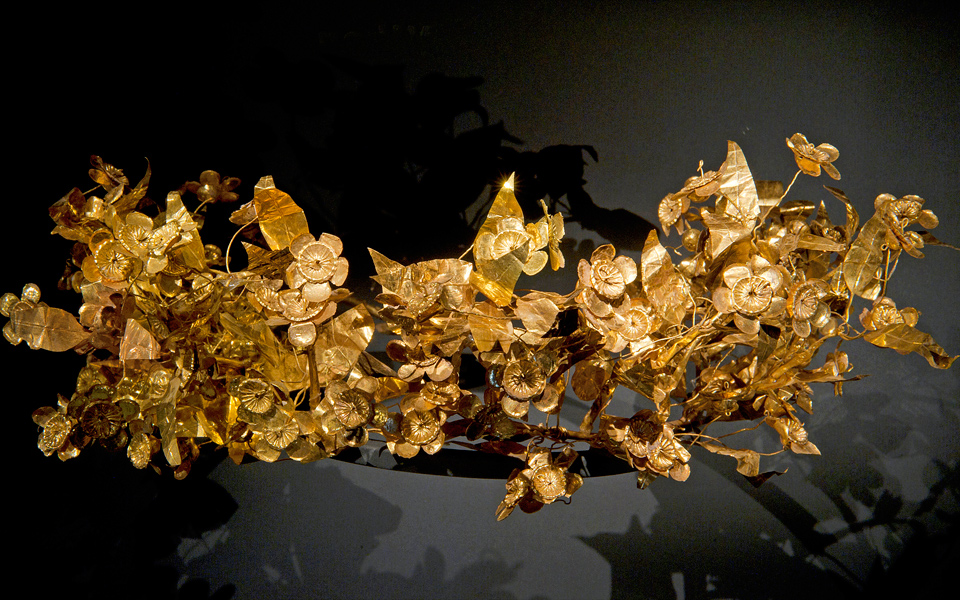Thessaloniki provides an ideal base from which to explore the history and archaeological sites of northern Greece. No matter where you travel in this country of diverse regions, it seems you can always find something new, intriguing and worthy of note. This is particularly true when you head north, away from the teeming megalopolis of Athens into the lush plains and rolling green hills of Macedonia. One enters a different world, marked first by the towering mass of Mount Olympus, which, along with the archaeological site of Dion in its shadow, stands sentinel over the region’s southern borderlands.
In the north, as elsewhere in Greece, impressive landscape combines with history, archaeology and present-day culture to ensure a unique, unforgettable experience. Here, one also finds Vergina (ancient Aigai), the first capital of ancient Macedonia and the burial place of King Philip II, whose son, Alexander the Great, came to rule most of Greece and eventually a vast empire in the East. Alexander’s spirit seems ubiquitous in this central area of Macedonia – at nearby Pella, where he was born and grew up; at shady Mieza, where he continued his studies under the philosopher Aristotle; and at Amphipolis, about 100k east of Thessaloniki, where in 334 BC he mustered his land and naval forces before departing across Thrace for Asia.

However, northern Greece’s past does not begin and end with Alexander who, although unquestionably its greatest luminary, can today be recognized as one particularly bright star within a more extensive chronological constellation of influential figures – both ancient and modern – that have also left their mark on the region’s history. These important Macedonian characters range from the anonymous Petralona Man, whose 200,000-to-400,000-year-old skull was discovered in 1960 deep in a cave in Halkidiki, to the late archaeologist Manolis Andronikos, who, in the 1970s, unearthed the ancient royal graves at Vergina.
Thousands of years ago, Greece was a preferred path for transient people streaming into Europe from the Middle East, much like today in fact. Northern Greece, in particular, witnessed the passage of many travelers, some of whom stopped temporarily or settled down in more permanent villages. Near Apsalos in the Pella district, archaeologists have identified a 10,000-year-old campsite where Mesolithic people erected wooden shelters and used chipped-stone tools, but still lacked the know-how to produce pottery. The enormous span of Macedonia’s history is similarly attested by its many Neolithic settlements. At Dispilio, on the southern shore of Kastoria Lake (ca. 5600-3000 BC), timber, reed and clay houses on elevated wooden platforms (now partly reconstructed) once accommodated a community of fishermen who inscribed symbols on wooden tablets – perhaps to record their catches or to inventory other food supplies. Elsewhere around the Kastoria and Prespa lakes, one finds the much later remains of Byzantine painted churches and medieval hermits’ caves, while in Kastoria itself are preserved many Ottoman-era 18th and 19th century archontika (mansions).

Further north, the Via Egnatia, a major East-West highway built by Roman engineers (2nd c BC), once stretched across Macedonia and Thrace, allowing Rome’s imperial troops to move speedily through the area to reach its eastern provinces and frontiers. Today’s Egnatia Odos follows much the same route and greatly facilitates present-day travelers intent on exploring the region. In the area of Florina, Hellenistic-Roman Petres – once a prosperous, agriculture-based town with workshops for pottery, figurines, metal goods and sculpture – was for passers-by on the ancient highway the first or last urban center inside Macedonia.
The heart of ancient Macedonia lay southwest of Thessaloniki. This was the central stomping ground of Philip, Alexander and his ruthlessly supportive mother Olympias, who conceived the boy, legend held, after Zeus came to her bed disguised as a serpent. It was here that generations of Macedonian kings, beginning in the 7th century BC, based themselves at Aigai (Vergina) and later at Pella; and from where Philip and Alexander successively expanded their hegemony to the wild Epirote west, to the distant northern province that today grandly labels itself “Macedonia,” to eastern, mineral-rich Thrace and to the revered southern realm of Classical Greece. By consolidating and expanding on his father’s imperial conquests, Alexander brought Macedonia to an economic and cultural zenith, evident in the splendor of his capital at Pella, and set the stage for the rise of the Hellenistic world.
“Manolis Andronikos’ discovery of the royal tombs of Vergina in 1977 has had much the same impact on Greek archaeology and history as Schliemman’s formative late-19th century revelations concerning the Bronze-age kings of Mycenae.”

© Shutterstock
The wealth of ancient Macedonia is also apparent in the ornate chamber tombs of Lefkadia (Mieza); and at Archontiko, near Pella, where more than 1,000 now-excavated graves of late Geometric through Hellenistic date indicate a long-lived settlement whose later inhabitants possessed gold-trimmed bronze armor and lavish jewelry.
History and archaeology continue to be rich east of Thessaloniki in the three-fingered Halkidiki region, whose easternmost peninsula hosts Mount Athos, a Christian monastic enclave that has existed for at least 12 centuries. At Olynthos, Halkidiki’s political and cultural nucleus in the 5th and 4th centuries BC, visitors will find a modern-like orthogonally planned city, burned by Philip II in 348 BC, but notable today for its extensive array of Classical houses and fine pebble-mosaic floors. Further east lie the coastal city of Stageira, birthplace of Aristotle, and the hilltop castle of Rentina, a control point for the Via Egnatia, fortified in Late Roman and Byzantine times. The adjoining city of Arethousa was infamous as the place where the playwright Euripides died after being attacked by King Archelaos’ hunting dogs.
Continuing east across the Strymonas River, one comes to Amphipolis and eventually (166k east of Thessaloniki) to Philippi, located at another strategic pass successively fortified and colonized by the Thracians, Romans and Byzantines. Following St Paul’s visit circa AD 49, Philippi became a major Christian center and a magnet for pilgrims. Almost 2,000 years later, the city’s fascinating expanse of ruins encompass a fortified acropolis, an agora, an impressive, partly reconstructed theater and numerous sanctuaries, churches, baths, shops, public buildings, common houses and sumptuous mosaic-floored bishops’ residences. From one end to the other, an archaeological journey through eternal northern Greece has much to offer.












